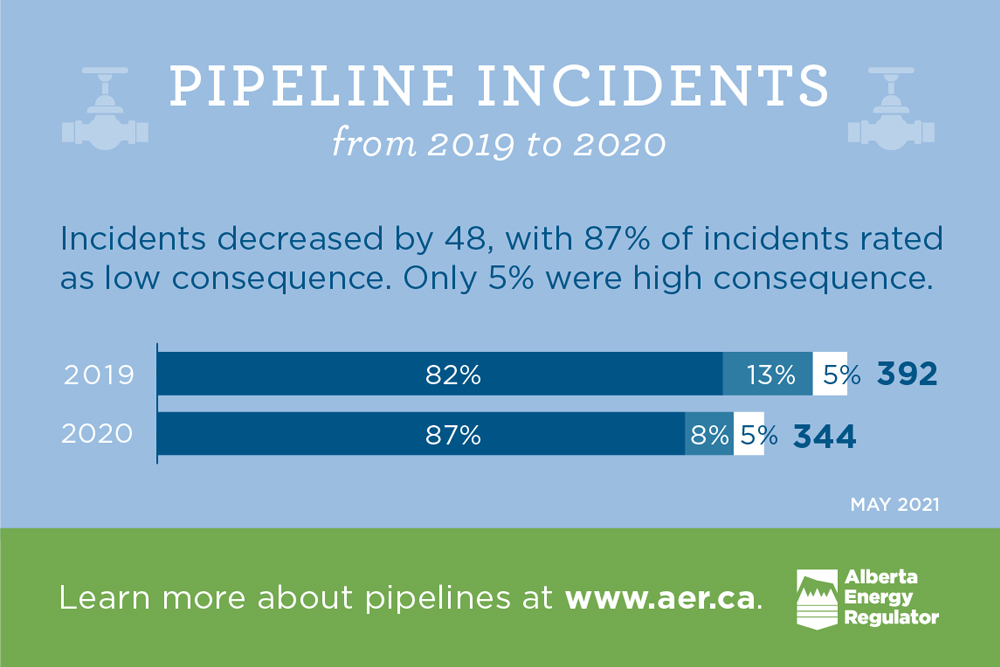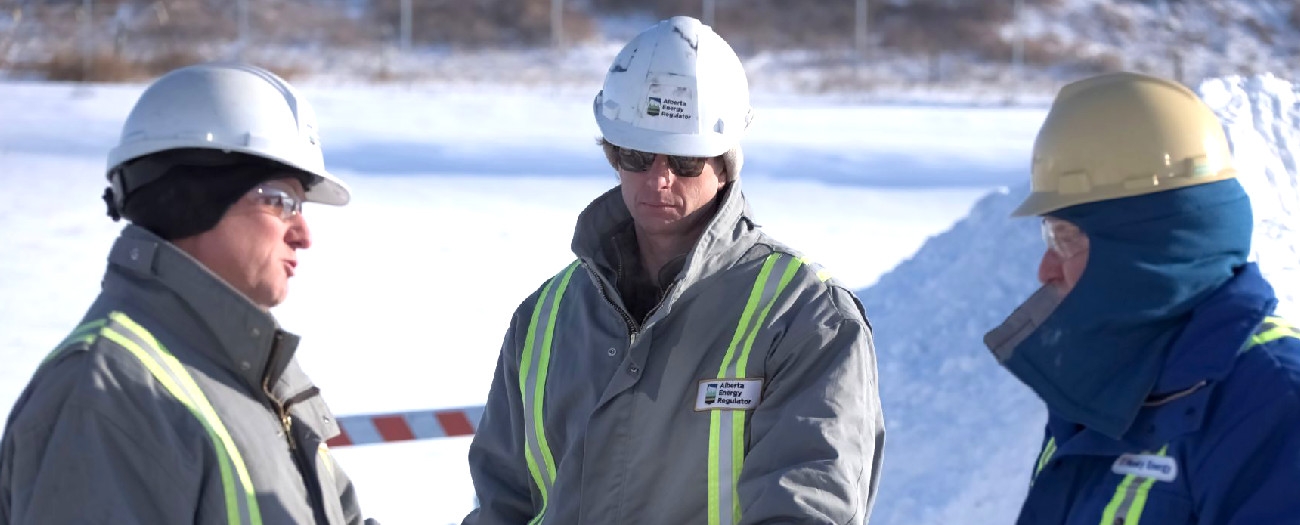AER shares results from 2020 pipeline performance
Alberta - September 07, 2021Did you know that if you stretched out Alberta's pipeline network it would span beyond the distance to the moon by about 49,000 km? Right under our feet is 433,000 km of pipeline that spans across Alberta, moving oil and gas to markets at home and beyond for processing into products we use daily.
It's the AER's job to regulate those pipelines and hold companies accountable for following the rules.
The AER's industry performance program shares data from energy development activity to identify emerging issues and trends that the energy industry should focus on in order to reduce incidents. This data is shared in the annual Pipeline Performance Report.
"The Pipeline Performance Report is an important resource for companies that allows for performance comparisons between their peers. Knowing what other companies have experienced helps each company identify potential areas of concern in their own pipeline systems."
- Connie Hetherington, pipeline technical advisor
"The Pipeline Performance Report is an important resource for companies that allows for performance comparisons between their peers," says Connie Hetherington, a pipeline advisor who works in industry performance at the AER. "Knowing what other companies have experienced helps each company identify potential areas of concern in their own pipeline systems. This aids them in prioritizing and supporting pipeline integrity work and integrity management programs."
Prevention begins with knowledge. For example, internal corrosion remains the leading cause of pipeline incidents, representing 46 per cent of all pipeline incidents in 2020.
The AER continues to work with the industry to find ways to monitor and mitigate internal corrosion. The AER has put a focus on inspecting pipelines that have a higher probability of failure due to internal corrosion and requires operators to develop and maintain leak detection programs for each pipeline they operate, helping build a better future.

Below are some highlights from the 2020 pipeline performance report:
We are continuing to improve
In 2020, the number of pipeline incidents in Alberta decreased by 12 per cent compared to 2019
(343 incidents in 2020 compared to 390 in 2019).
Most incidents are low consequence
About 87 per cent of incidents were rated as being "low consequence" in terms of their effect on the public, environment, wildlife, and livestock; 8 per cent were rated as "medium consequence"; and only 5 per cent were "high consequence."
The number of pipeline incidents that were rated as high consequence dropped by 20 per cent, decreasing to 16 incidents in 2020 from 20 incidents in 2019.
Incidents are decreasing while pipeline lengths are increasing
It's important to look at the big picture: the total number of incidents in 2020 was about 40 per cent lower than in 2011, even though the total length of pipelines grew by 11 per cent in that time.
"Although the report shows that in the past few years incidents have decreased, the AER continues to closely monitor pipeline performance as oil prices rise and industry activity increases," adds Hetherington. "Preventing pipeline failures and minimizing consequences through leak detection programs remains our focus."
Find out more about our 2020 Pipeline Performance Report.
Megan McClure, Writer


